Abstract
Applied behavior analysis is based on an investigation of variability due to interrelationships among antecedents, behavior, and consequences. This permits testable hypotheses about the causes of behavior as well as for the course of treatment to be evaluated empirically. Such information provides corrective feedback for making data-based clinical decisions. This paper considers how a different approach to the analysis of variability based on the writings of Walter Shewart and W. Edwards Deming in the area of industrial quality control helps to achieve similar objectives. Statistical process control (SPC) was developed to implement a process of continual product improvement while achieving compliance with production standards and other requirements for promoting customer satisfaction. SPC involves the use of simple statistical tools, such as histograms and control charts, as well as problem-solving techniques, such as flow charts, cause-and-effect diagrams, and Pareto charts, to implement Deming's management philosophy. These data-analytic procedures can be incorporated into a human service organization to help to achieve its stated objectives in a manner that leads to continuous improvement in the functioning of the clients who are its customers. Examples are provided to illustrate how SPC procedures can be used to analyze behavioral data. Issues related to the application of these tools for making data-based clinical decisions and for creating an organizational climate that promotes their routine use in applied settings are also considered.
Full text
PDF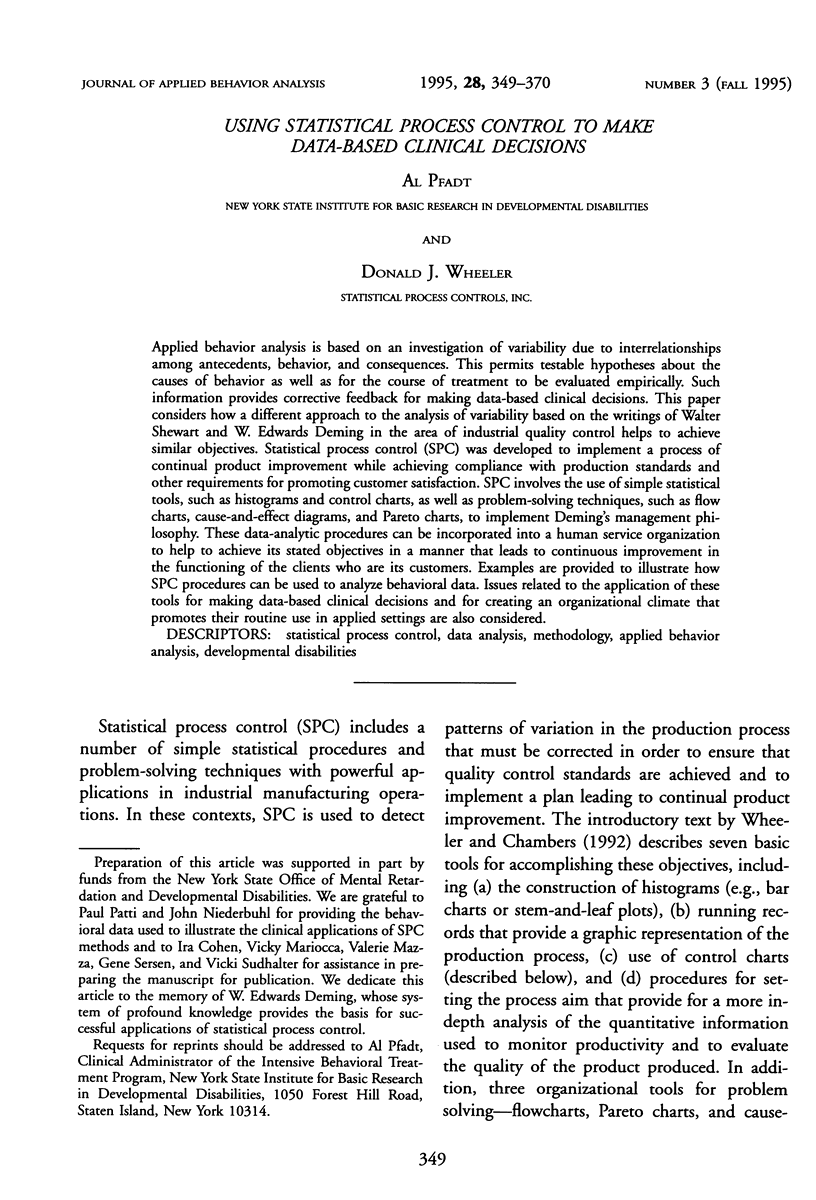



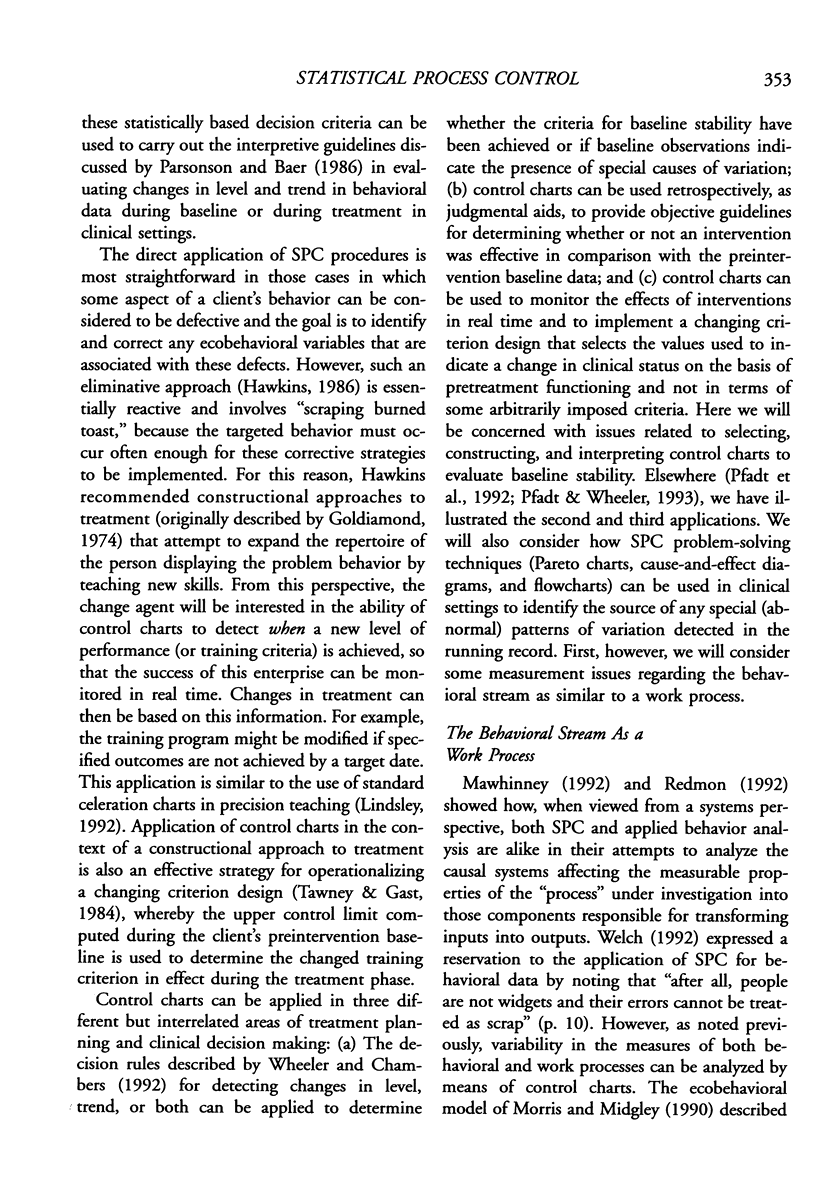
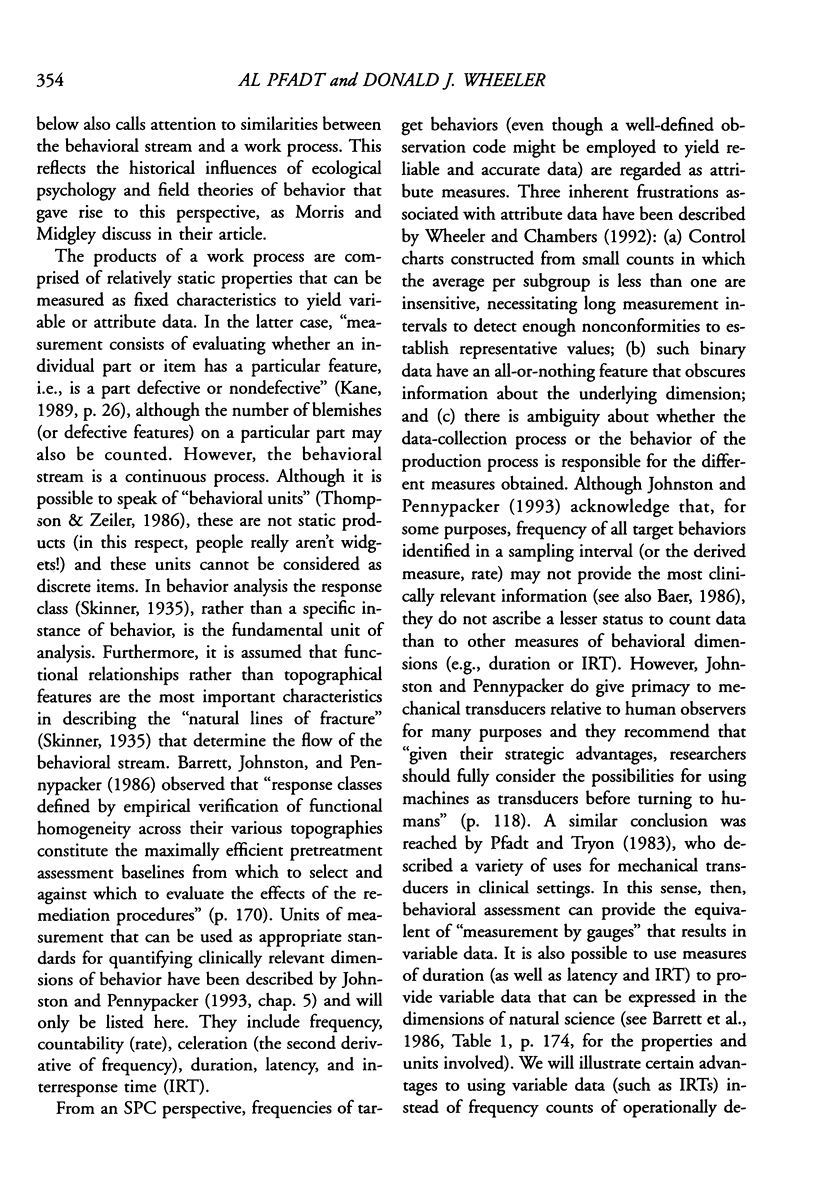

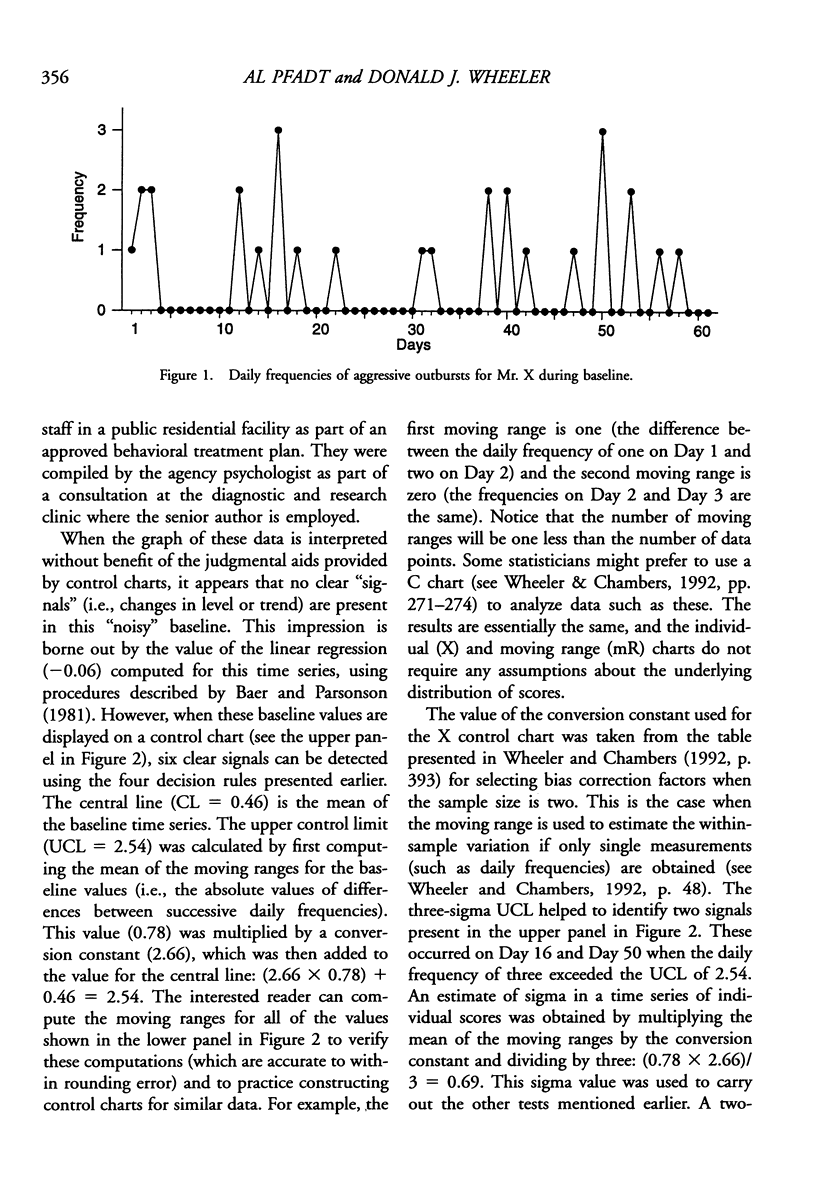






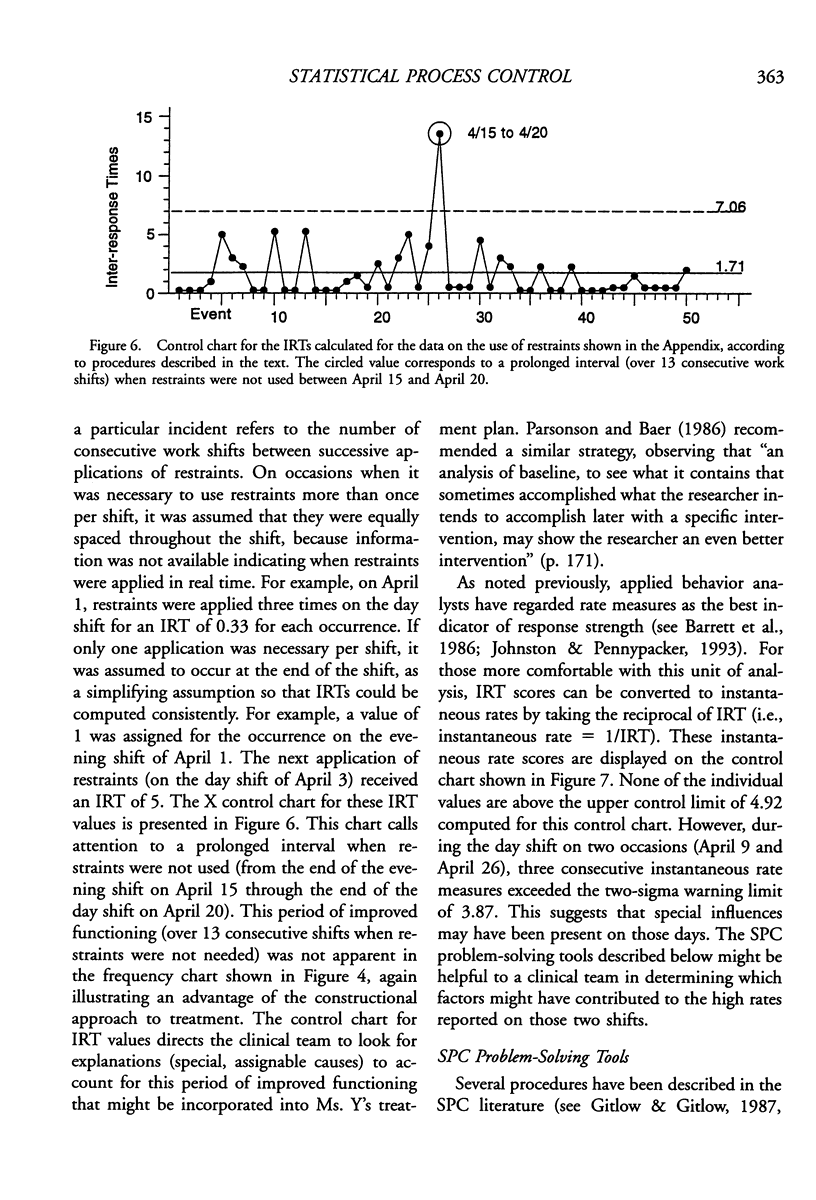


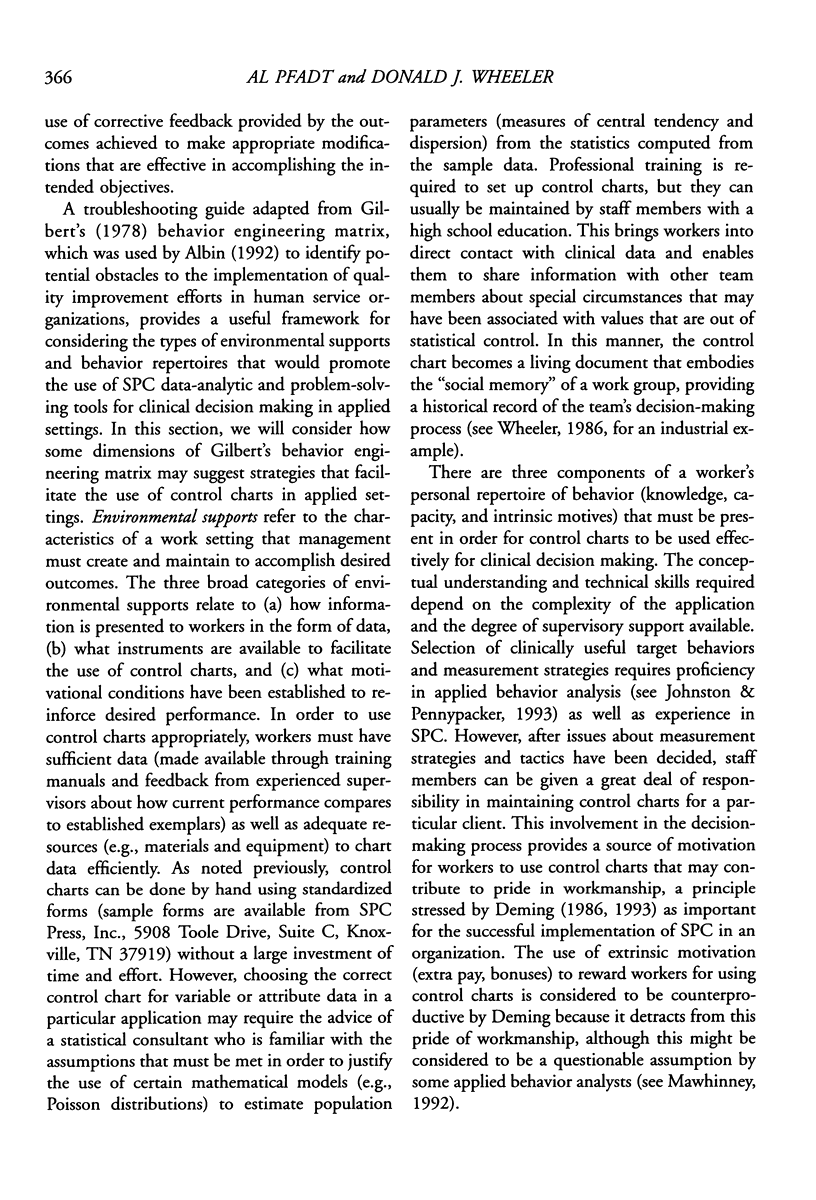


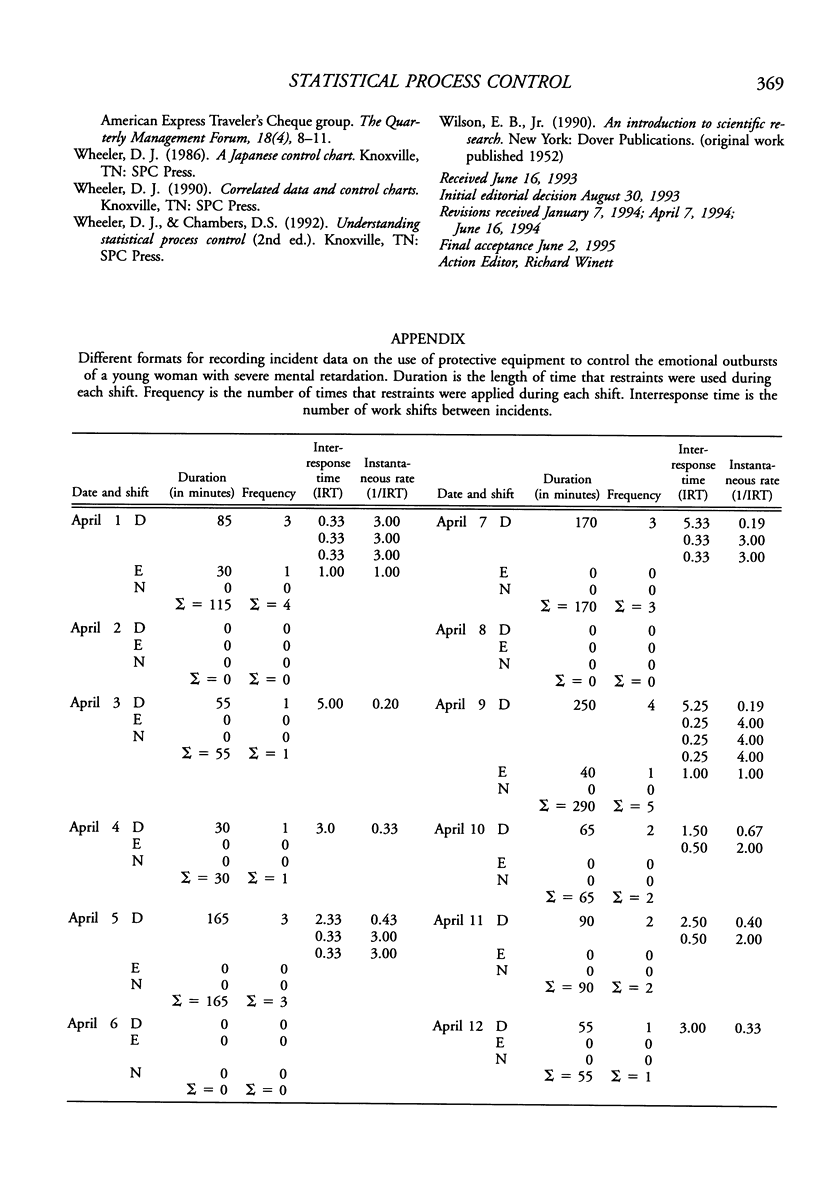
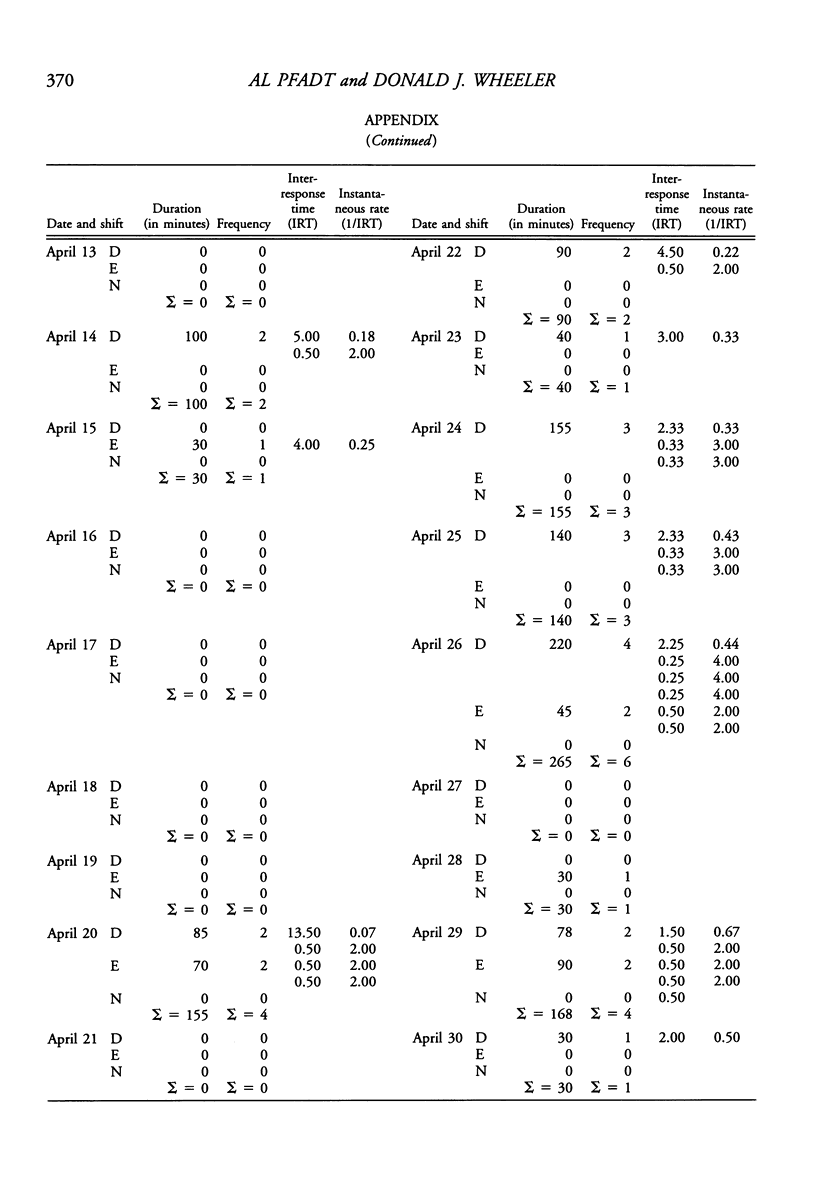
Selected References
These references are in PubMed. This may not be the complete list of references from this article.
- Bailey D. B. Effects of lines of progress and semilogarithmic charts on ratings of charted data. J Appl Behav Anal. 1984 Fall;17(3):359–365. doi: 10.1901/jaba.1984.17-359. [DOI] [PMC free article] [PubMed] [Google Scholar]
- Birkimer J. C., Brown J. H. A graphical judgmental aid which summarizes obtained and chance reliability data and helps assess the believability of experimental effects. J Appl Behav Anal. 1979 Winter;12(4):523–533. doi: 10.1901/jaba.1979.12-523. [DOI] [PMC free article] [PubMed] [Google Scholar]
- Cumming W. W., Schoenfeld W. N. Behavior Stability Under Extended Exposure to a Time-Correlated Reinforcement Contingency. J Exp Anal Behav. 1960 Jan;3(1):71–82. doi: 10.1901/jeab.1960.3-71. [DOI] [PMC free article] [PubMed] [Google Scholar]
- Fawcett S. B. Some values guiding community research and action. J Appl Behav Anal. 1991 Winter;24(4):621–636. doi: 10.1901/jaba.1991.24-621. [DOI] [PMC free article] [PubMed] [Google Scholar]
- Goldiamond Israel. Toward a constructional approach to social problems: ethical and constitutional issues raised by applied behavior analysis. Behaviorism. 1974 Spring;2(1):1–84. [PubMed] [Google Scholar]
- Groden G. A guide for conducting a comprehensive behavioral analysis of a target behavior. J Behav Ther Exp Psychiatry. 1989 Jun;20(2):163–170. doi: 10.1016/0005-7916(89)90049-9. [DOI] [PubMed] [Google Scholar]
- Haring T. G., Kennedy C. H. Units of analysis in task-analytic research. J Appl Behav Anal. 1988 Summer;21(2):207–215. doi: 10.1901/jaba.1988.21-207. [DOI] [PMC free article] [PubMed] [Google Scholar]
- Hartmann D. P., Gottman J. M., Jones R. R., Gardner W., Kazdin A. E., Vaught R. S. Interrupted time-series analysis and its application to behavioral data. J Appl Behav Anal. 1980 Winter;13(4):543–559. doi: 10.1901/jaba.1980.13-543. [DOI] [PMC free article] [PubMed] [Google Scholar]
- Killeen P. R. Stability criteria. J Exp Anal Behav. 1978 Jan;29(1):17–25. doi: 10.1901/jeab.1978.29-17. [DOI] [PMC free article] [PubMed] [Google Scholar]
- Lindsley O. R. Precision teaching: Discoveries and effects. J Appl Behav Anal. 1992 Spring;25(1):51–57. doi: 10.1901/jaba.1992.25-51. [DOI] [PMC free article] [PubMed] [Google Scholar]
- Mann N. R., Charuvastra V. C., Murthy V. K. A diagnostic tool with important implications for treatment of addiction: identification of factors underlying relapse and remission time distributions. Int J Addict. 1984 Feb;19(1):25–44. doi: 10.3109/10826088409055815. [DOI] [PubMed] [Google Scholar]
- Pfadt A., Cohen I. L., Sudhalter V., Romanczyk R. G., Wheeler D. J. Applying statistical process control to clinical data: an illustration. J Appl Behav Anal. 1992 Fall;25(3):551–560. doi: 10.1901/jaba.1992.25-551. [DOI] [PMC free article] [PubMed] [Google Scholar]
- Pfadt A., Tryon W. W. Issues in the selection and use of mechanical transducers to directly measure motor activity in clinical settings. Appl Res Ment Retard. 1983;4(3):251–270. doi: 10.1016/s0270-3092(83)80006-x. [DOI] [PubMed] [Google Scholar]
- Redmon W. K. Opportunities for applied behavior analysis in the total quality movement. J Appl Behav Anal. 1992 Fall;25(3):545–550. doi: 10.1901/jaba.1992.25-545. [DOI] [PMC free article] [PubMed] [Google Scholar]
- Touchette P. E., MacDonald R. F., Langer S. N. A scatter plot for identifying stimulus control of problem behavior. J Appl Behav Anal. 1985 Winter;18(4):343–351. doi: 10.1901/jaba.1985.18-343. [DOI] [PMC free article] [PubMed] [Google Scholar]


